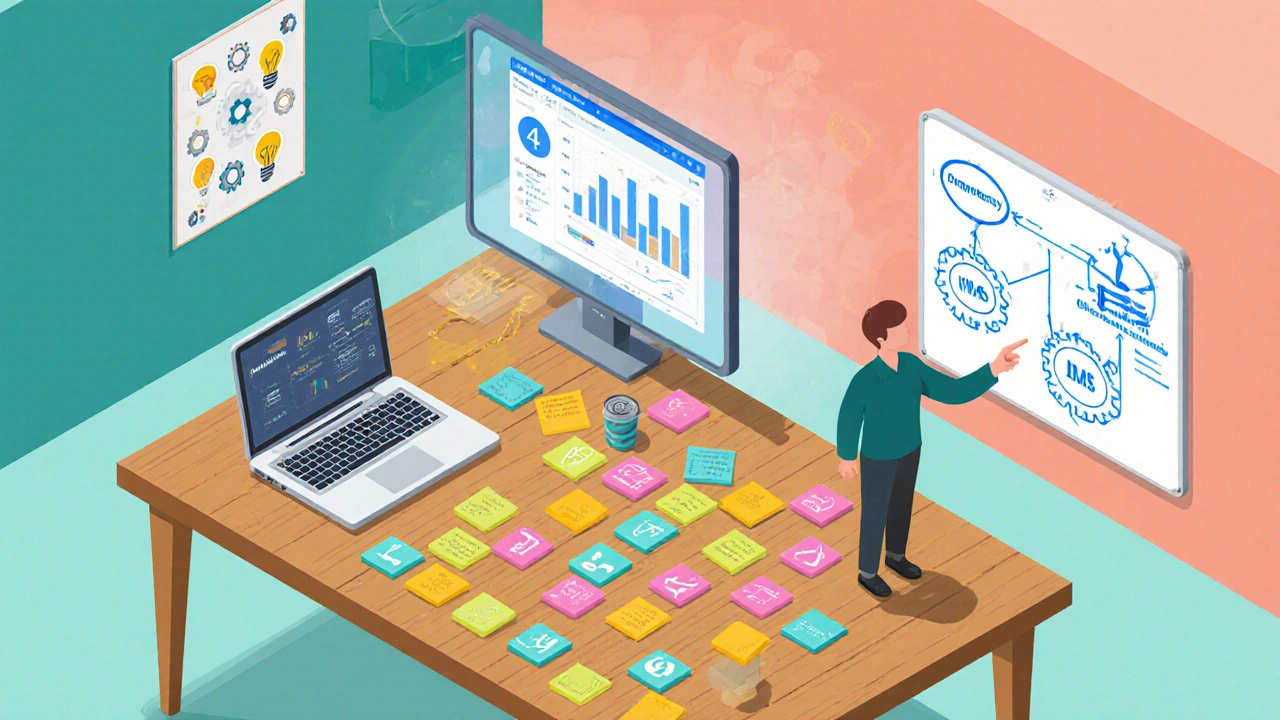Skill Training Program Designer
Select your training parameters to get recommendations for the most effective skill development approach based on real-world examples from the article.
Enter your program parameters to see recommendations
Ever wonder what a real "skill training" session actually looks like? You might have heard the term tossed around in career talks or education brochures, but without a concrete example it stays vague. This guide breaks down the concept, shows you several skill training examples from different industries, and gives you a step‑by‑step plan to design a program that fits your goals.
Key Takeaways
- Skill training is a focused learning activity that builds a specific ability, from hard technical tasks to soft interpersonal behaviours.
- Four main delivery modes dominate today: on‑the‑job, classroom, e‑learning, and blended formats.
- Real examples include a welding apprenticeship, a digital‑marketing bootcamp, and a microlearning series for customer‑service reps.
- Designing a program requires defining competencies, choosing a delivery method, setting milestones, and measuring outcomes.
- A quick checklist at the end helps you launch a pilot in under two weeks.
What Is Skill Training?
Skill Training is a structured learning activity aimed at developing a specific competency, whether it’s operating a CNC machine, writing persuasive copy, or handling a tough customer call. Unlike broad academic education, skill training zeroes in on practical performance and often includes hands‑on practice, feedback loops, and measurable outcomes.
Why Skill Training Matters
Companies with robust skill‑training programmes see higher productivity, lower turnover, and faster onboarding. On an individual level, mastering a new skill can open doors to promotions or entirely new career paths. In a rapidly changing job market, the ability to upskill quickly is a major competitive edge.

Common Types of Skill Training
Understanding the delivery format helps you pick the right fit for your learners.
- On-the-Job Training - Learning while performing the actual job, often guided by a mentor.
- Classroom Training - Instructor‑led sessions in a physical or virtual classroom.
- E‑Learning - Self‑paced digital courses delivered via a Learning Management System (LMS).
- Apprenticeship - A formal blend of on‑the‑job work and classroom study, recognized by industry bodies.
- Microlearning - Bite‑size modules (2‑5 minutes) focused on a single skill element.
- Simulation‑Based Training - Virtual or physical simulations that mimic real‑world scenarios.
Real‑World Example #1: Welding Apprenticeship
In the UK, a typical welding apprenticeship combines 30% classroom theory (often delivered by a vocational training centre) and 70% on‑the‑job practice under a qualified mentor. The programme is mapped to a competency framework that lists measurable outcomes such as "can set up MIG welding equipment to ISO9001 standards" or "produces defect‑free welds on 10mm steel plates." Over two years, apprentices earn a Level3 qualification and typically achieve a wage increase of 15‑20% upon completion.
Real‑World Example #2: Digital‑Marketing Bootcamp (E‑Learning)
Jane, a stay‑at‑home parent, enrolled in a six‑week online bootcamp that promised "job‑ready" skills. The course used a mix of video lectures, interactive quizzes, and real‑time projects hosted on a learning management system. Core modules covered soft skills (communication, time‑management) and technical skills (Google Ads, SEO). After completing a capstone campaign for a local bakery, Jane landed a junior digital‑marketing role with a salary boost of £5,000 per year.
Real‑World Example #3: Customer‑Service Microlearning Series
A retail chain rolled out a microlearning series to improve complaint handling. Each 3‑minute video focused on a single scenario - e.g., "de‑escalating an angry shopper" - followed by a quick knowledge check. The series was delivered via the company's internal mobile app, allowing staff to learn during shift breaks. Within three months, the first‑call resolution rate rose from 68% to 82%.

How to Design a Simple Skill Training Program
- Identify the target competency. Use a competency framework or job analysis to pin down the exact skill you want learners to master.
- Choose the delivery mode. Match the skill’s complexity with on‑the‑job, classroom, e‑learning, or blended approaches.
- Develop learning materials. Create videos, practice worksheets, simulations, or scenario cards that align with the learning objectives.
- Set measurable milestones. Define clear success criteria - e.g., "complete 5 welding joints with <1% defects" or "run a live PPC campaign with a ROAS≥4".
- Assign mentors or coaches. Provide a point‑of‑contact for feedback and real‑time correction.
- Implement assessment. Use practical tests, quizzes, or performance reviews to gauge proficiency.
- Iterate. Collect learner feedback, analyse outcomes, and tweak the curriculum every 6‑12months.
Quick Checklist for Planning Skill Training
- Define the skill and its business impact.
- Map the skill to an existing competency framework.
- Select a delivery method that suits learner availability.
- Prepare concise, practice‑focused content.
- Establish clear assessment criteria.
- Allocate a mentor or coach.
- Schedule a pilot run (2‑4 weeks) before full rollout.
Comparison of Common Skill‑Training Formats
| Format | Typical Duration | Cost per Learner | Best For |
|---|---|---|---|
| On‑the‑Job | Ongoing | Low (mentor time only) | Hands‑on trades, equipment operation |
| Classroom | 1‑5 days | Medium (venue, instructor) | Regulatory compliance, theory‑heavy topics |
| E‑Learning | Self‑paced (weeks) | Low‑Medium (LMS license) | Geographically dispersed teams, tech skills |
| Apprenticeship | 1‑3 years | Variable (employer‑funded) | Skilled trades, professional qualifications |
| Microlearning | Minutes per module | Low | Just‑in‑time updates, soft‑skill refreshers |
Frequently Asked Questions
What distinguishes skill training from general education?
Skill training zeroes in on a specific ability and measures performance directly, whereas general education covers broader knowledge areas and often lacks immediate practical assessment.
How long does it take to see results from a skill‑training program?
Results depend on the skill’s complexity and the delivery mode. Microlearning can show behaviour change within a few weeks, while apprenticeships may take 1‑3years for full proficiency.
Can I combine multiple formats in one program?
Absolutely. A blended approach-e.g., e‑learning for theory, followed by on‑the‑job practice-often yields the best retention and performance outcomes.
What tools do I need to run e‑learning skill training?
At minimum, a Learning Management System (LMS) to host content, track progress, and generate reports. Popular options include Moodle, TalentLMS, and Canvas.
How do I measure the success of a skill‑training initiative?
Use a mix of quantitative metrics (assessment scores, error rates, productivity gains) and qualitative feedback (learner satisfaction, confidence levels). Align these metrics with the original business objective.
